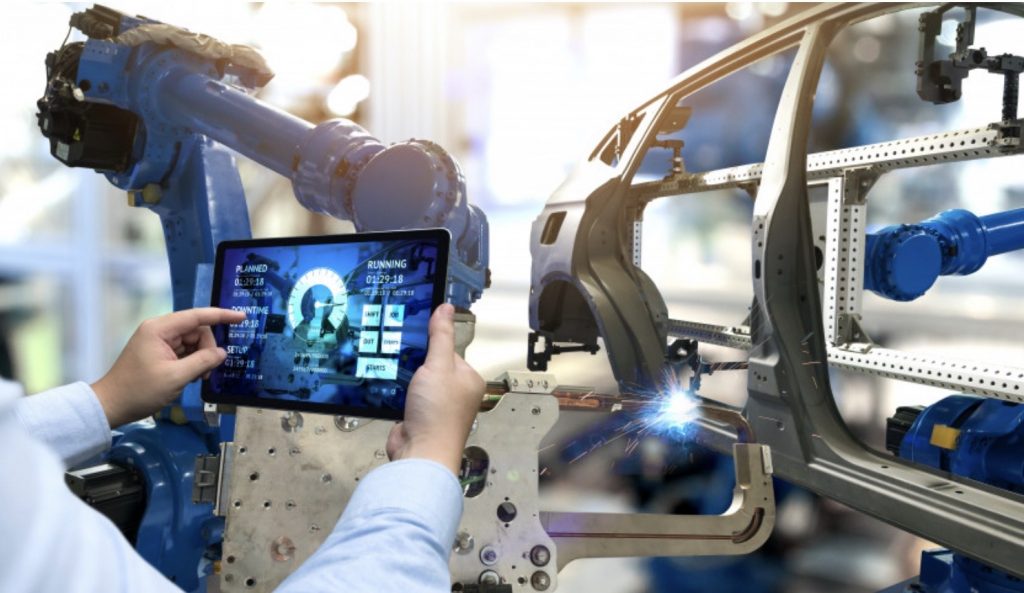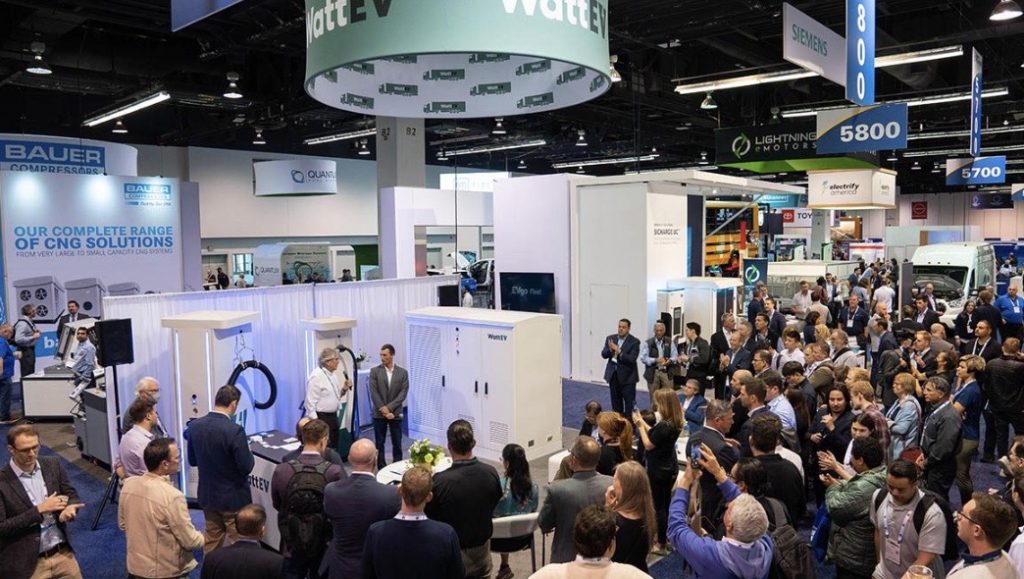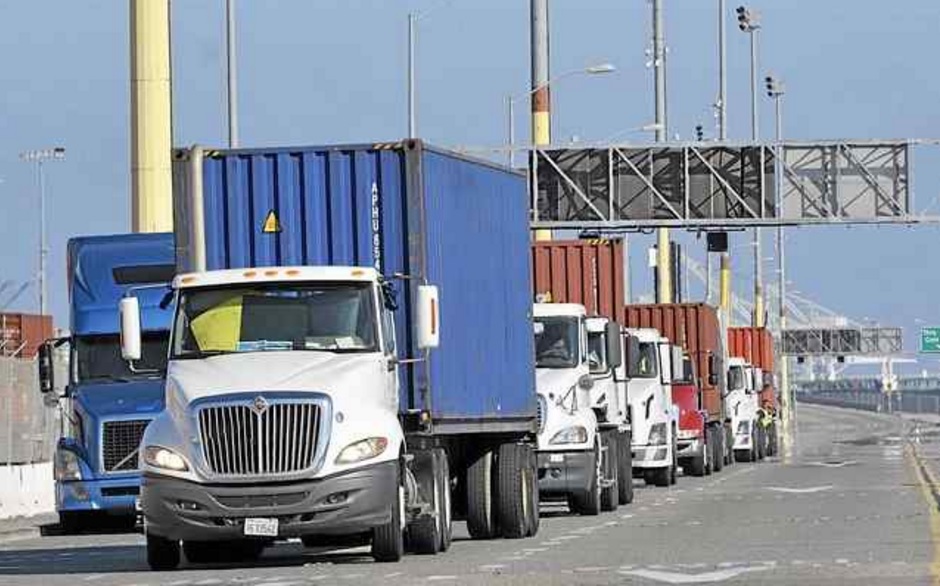
The first-ever factory robotic was tried out by GM in 1961.
It’s been fascinating to see artificial intelligence become an even more significant, pervasive topic than Covid-19 in the news this year. While it certainly didn’t start this year, it took a turn on Nov. 30, 2022, with the release of the ChatGPT, an AI chatbot developed by OpenAI. Congressional hearings this month with Sam Altman, CEO of OpenAI, have stirred the pot even more.
In late May 2014, Google launched its first self-driving test car at its corporate campus. That event launched a huge wave of attention and discourse — and ambitious announcements made by automotive CEOs. While that technology is still in development, and awaits government approval to roll out on roads beyond where it stands today, AI was always a core theme and actuality that would come up during discourse.
Here’s an overview on how significant it has been for the auto industry and its potential for advanced, clean transportation…………..
- Follow the money
Following an excellent earnings report issued by technology company Nvidia, its shares shot up 24.4% on the NYSE yesterday — a near-record gain in a one-day increase in market capitalization for a US company. Nvidia is a key player in the game. It makes the chips used to train AI platforms such as ChatGPT, which powered the company’s training by using 10,000 Nvidia graphic processing units (GPUs) on a Microsoft supercomputer, according to the BBC.
Crunchbase reported that $20 billion has been raised by startups using AI in 2023.
According to equity market analyst PitchBook’s report, venture capitalists have steadily increased their positions in generative AI, from $408 million in 2018 up to $4.8 billion in 2021 and $4.5 billion in 2022. Generative AI is a type of AI system capable of generating text, images, or other media in response to prompts. It rapidly learns the patterns and structures of their input training data, and then generates new data that’s very similar.
ChatGPT falls into this segment, with GPT standing for Generative Pretrained Transformer architecture. That language model tool can answer questions and assist users with tasks, such as composing emails, essays, and code. While all this attention has raised concerns over job loss in several categories, arguments are also being made about the benefits the technology can bring to assist workers in this fast-changing, stressful workplace. One ChatGPT rival, Anthropic, recently raised $450 million in Series C funding.
Bessemer Venture Partners, one of the oldest venture firms in the U.S., has set aside $1 billion of its most recent fund solely for investments in AI. Sameer Dholakia, a partner at the firm, sees this level of investment in AI inevitable. He sees the adoption curve being much faster than previous platform shifts such as cloud computing.
“Literally trillions of dollars of value gets created when you have these massive tectonic shifts,” Dholakia said.
2. It’s been in the works for over 60 years Manufacturing robotics: The first robotic system was introduced in New Jersey, on a General Motors assembly line, in 1961. Today, the auto industry is usually considered to be the fastest and most extensive adopter of the technology with the focus on creating the most efficiient supply chainz. That hasn’t always gone over well with UAW and job loss, but union contracts and management pratices have had to adapt to these significant changes over the years.
Cruise control: American Motors introduced the first car with that option in 1965. After the OPEC oil embargo and gasoline price crisis of 1973, it gained popularity as a way to drive efficiently and save gas.
Telematics: General Motors launched OnStar in 1996, which at first become the first-ever in-vehicle telematics system; along with a safety emergency service responding to airbag deployments. Other safety and convenience services were added over the years tied to smartphones and dashboards.
Connectivity: Over the past 15 years, connected, semi-autonomous features have been added — lane changing, safety warnings, self parking, app to car connectivity, entertainment/infotainment, security functions, and eventually, vehicle-to-vehicle communications. Mass adoption of the iPhone and Android phones was behind this surge.
- Autonomous electric vehicles depend on AI to clear safety standards
About eight years ago, I moderated a panel during a Clean Cities event that discussed future modes of transportation and urban mobility that were going to be tested and eventually deployed. One moment that stood out was how much everyone in the room seemed to agree that autonomous electric vehicles made a great deal of sense — and needed to be developed. These vehicles need a lot less maintenance and replacement parts, and would maximize the energy stored in their batteries.
Perhaps the biggest barrier to overcome for autonomous vehicles to become viable is resolving the safety question. AI is being used to simulate real-world conditions to safety-test autonomous vehicles. Without AI, there will be no self-driving vehicles.
General Motors, and several other global automakers, sees all of this coming together in the near future. Personal vehicles with internal combustion engines played a vital role in giving Americans a great sense of personal freedom in their lives. But that also brought about huge challenges in the form of pollution, congestion and accidents.
“At GM, our vision of a future with Zero Crashes, Zero Emissions and Zero Congestion has guided the development of our self-driving test vehicles and our belief that all fully autonomous vehicles should be electric vehicles,” the company said on its website.
- Driving is heading toward a new wave of ease, safety, traffic avoidance, and efficiency
Wendy Gonzalez, CEO of Sama, which provides best data annotation services for AI and machine learning models, sees AI’s contribution being the driving force behind transforming vehicles through integrated innovations across the industry.
Autonomous vehicle manufacturers must create datasets that will ensure their AI can enable safe hands-free driving. That will be the primary element for enabling accident prevention — accurate risk assessment and monitoring the driver.
This technology revolution can enhance the luxury experience and personalize the vehicle, she said. AI can tap into machine learning to adapt the vehicle specifically to that driver, according the Porsche. The automakers trained more than 270 machine learning models during development to create the most effective recommendations possible — with its AI recommendations becoming more than 90% accurate; and with accuracy improving through each use and data input.
In-car voice assistance is another pathway to reacing a high level of efficiency and safety, Gonzalez said. It used to be offered only in luxury vehicles, but 90% of all new vehicles sold globally are likely going to have voice assistants by 2028. Saying, “Hey Honda” (or whatever manufacturer made that vehicle), “turn on my Apple Music,” is much safer than the driver becoming distracted and unsafe to have that perk.
- Going outside the norm, with SPACs being a good example of it
Anything to do with AI is requiring a “thinking outside the box” approach. There’s always the humans vs. machines paradigm, and fear of something going very wrong. Backers of AI appear to be driven by the other side of that coin — creating much better living conditions for fellow human beings in upcoming centuries. And if you’re worried about massive job cuts, then what about all the good jobs it will take to build out and manufacture the technology, repair and maintain it, manage and direct it, learn from it, and carry it over to 2.0 versions?
Special purpose acquisition companies (SPACs) have been one of the alternative routes that AI startups are using to get the funding needed for R&D and to find financial backers. It may not get as much respect and street cred as IPOs, but it might be a more advantageous route to take — as was discovered in recent years by electric vehicle startups. In AI, SPAC funding rounds began showing up and working out; and are still part of the business plans for a few startups. iLearningEngines, a training provider offering “AI-powered learning automation,” announced in April that it plans to list on Nasdaq at an initial valuation of around $1.4 billion through a merger with shell company Arrowroot Acquisition Corp. Finding that senior partner company, or more than one, is part of getting SPAC deals made.
News Synopsis —
A few snippets of need-to-know news stories………….
Tesla and Ford just announnced a previously unheard-of alliance. The two companies went on Twitter Spaces for a live audio discussion between Tesla’s Elon Musk and Ford’s Jim Farley. Current Ford vehicle owners will get to access 12,000 Tesla supercharges across the US and Canada beginning early next year; but they’ll need to get an adapter. Next-gen Ford electric vehicle owners will receive Tesla’s charging plug; that will begin in mid-decade.
Two South Korean giants, Hyundai Motor Group and LG Energy Solution, have forged an EV battery cell manufacturing joint venture in the U.S. Starting construction in the second half of this year, the JV plans to start battery production at the end of 2025 at the earliest.
Tesla may have failed to protect 100 gigabytes of confidential data leaked by a whistleblower, according to Germany’s Handelsblatt data protection watchdog for the Netherlands. That data was tied to customers, employees and business partners, according to the agency.
The U.S. Department of Energy (DOE) this week announced the Clean Fuels & Products Shot, with the goal of substantially decreasing greenhouse gas emissions (GHGs) coming from carbon-based fuels used by the fuel and chemical industries. That decrease would come from utilizing more environmentally friendly carbon sources, that would target a minimum reduction of 85% in GHG emissions compared to fossil-based sources by 2035.
Citi analyst Itay Michaeli wrote in a recent note to clients that things are not as bad for Tesla as you might think — with all the competition the company is facing and the negative attention that Twitter-focused CEO Elon Musk has been going through. The electric vehicle maker’s brand loyalty is staying strong, according to quarterly S&P Global data, and in a report from Barron’s. The data analytics show that Tesla’s brand loyalty remains high and that the automaker continues to take share away from other automakers.



